A close friend recently forwarded an interesting paper to me by Andrew Bell, Bryn Davies, and Habibi Ammari, called Bernhard Riemann, the Ear, and an Atom of Consciousness. Though this paper was written only recently (July 2021), it references a partial manuscript composed by Riemann back around 1865-1866. According to the authors, Riemann’s work not only makes several original, accurate, and modern contributions to the science of human hearing, it also suggests a valid method of investigating human sense perception in general.
In this post, I’ll address four topics discussed by the authors: 1. the mind-body paradox, 2. Riemann against the materialists Helmholtz and Newton, 3. quantum mechanics and weak signals, and 4. Riemannian manifolds. My main goal here will be the following, besides to impart an appreciation of the Bell et al. (2021) paper and ask for more.
The authors assert that Riemann desired to apply his mathematical advances to the problem of how an ear translates external stimuli to objects of thought. I assert that they have it backwards. Riemann’s mathematical advances are a result with his conscious preoccupation with how the human mind makes sense of the world. His study of the ear was his attempt to both apply his work hitherto, as well as to shake the tree of knowledge for more fruitful mathematics.
Also, I’m writing this on the eve of my friend’s 70th birthday. On such a momentous occasion, let this be dedicated to his longevity and future contributions to human progress!
The Mind-Body Paradox
Maybe the term “Mind-Body Paradox” means different things for different armchair philosophers. Here, it refers to the problem of getting phenomena that seemingly occur outside the mind (“the body”) to register as an effect inside the human mind. This issue goes back to at least Plato, but it was also addressed by such figures as German scientist Gottfried Leibniz, and Riemann’s immediate philosophical predecessors Johann Herbart and Gustav Fechner. Note that Fechner was also an important influence on the early Gestalt Psychologists, Wolfgang Köhler, Max Wertheimer, and Kurt Koffka.
From Bell, et al. (2021):
For Riemann, the existence of a mind and its perception of underlying mathematical patterns and structure must underlie the scientific enterprise. The human mind is continuous with the physical universe, so the power of the mind to create thoughts and hypotheses comes before any causal power attributed to vibrating molecules in the air. For the scientist, the “problem of the organ”, as he put it when referring to the function of the cochlea, is to maintain continuity and provide a faithful interface between the sound wave and the apprehending mind, and the same logic applies to the submicroscopic motions of the middle ear.
Riemann was interested in this problem at least as early as 1853, around the time he penned his now famous “Philosophical Fragments”. Those fragments present a young Riemann curious about how Geistesmassen (thought-objects) enter into the mind in relation to physical changes in the perceptible universe. In this context, he describes several aspects of how sense perceptions must function to produce this transformation of outside to inside the mind. Besides describing a plausible hypothesis of how sight transforms viewed phenomena into thought-objects, he also goes rogue and describes a Fechnerian Earth Soul that perceives the composition of the atmosphere via the trees and plants as sense organs.
Another, up to now unpublished, example of Riemann’s interest in the human sense apparatus was his small study of the so-called Corpuscle of Vater. One page in Riemann’s manuscripts displays a strange diagram of concentric semicircles into which appear to enter refracting rays of light (see figure). The diagram and ensuing description may have been Riemann’s attempt to reproduce a page from some anatomy publication at the time. Here is a translation one of my old collaborators made of Riemann’s Fraktur handwriting:

Fig. 7. Diagram of half of a longitudinal cut through a corpuscle of Vater.
The elliptically curved lines are meant to denote:
aa the boundary of the outermost capsule
bb boundary inner and outer capsules
cc innermost capsule, sheath of the inner nucleus
dd length of the terminal fibrilThe cross section of the inner nucleus is shaded darkest, then follows the inner capsule system, and the outermost is the brightest. The parallel lines e signify the direction of the compression waves, which arise from the outer skin surface and concentrate at the line dd the more darkly shaded have greater density and less elasticity than the brighter ones.
Today, the Corpuscle of Vater is recognized to be one of four types of mechanoreceptors in the skin of mammals, generally understood to register texture and pressure. It was the first sensory receptor every discovered by a biologist, D. Abraham Vater around 1717. Thus, here is Riemann, searching for biological organs present in humans, that mediate the relationship between the surrounding world and the mind. It’s interesting that the organ, and specifically Riemann’s sketch of it, resembles Riemann’s own diagrams of multiply connected surfaces.
Helmholtz and Newton are Lame
Bell et al. (2021) start their study with the relationship between Riemann and the pair of Hermann Helmholtz and Isaac Newton.
First, on Newton:
…[T]he core of the matter is set out on the first page of Riemann’s text: We do not – as Newton proposes – completely reject the use of analogy (the “poetry of hypothesis”). Newton’s well-known statement that we must keep to the facts and not deal in hypotheticals clearly antagonised Riemann who saw the human mind as the centre of everything: it is the essential starting point for framing notions of the self and its place in the world… Science cannot get started – it is lame, as Einstein once said in connection with religion – without taking [mind and soul] as its foundation.
We won’t go too far into the Newton issue here, since the point is pretty clearly made by Bell et al. (2021). However, it is my own studied opinion that Newton should be understood not as an individual person, but rather as a project designed by committee with the purpose of rendering science – continental European science as led by Leibniz, in particular – lame. The advances I’ve studied that are attributed to Newton’s genius (admittedly, not all of them) can always be traced to other visionaries like Kepler, Huyghens, Bernoulli, and Leibniz. It is notable that, after Leibniz presented the clear steps that led him to the discovery of the integral calculus, Newton (who chaired the committee that investigated who made the discovery first) refused to present his own. Perhaps he was telling an embarrassing truth when he said he does not make hypotheses.
Now, on Helmholtz:
Riemann’s view is that hearing should be viewed as top-down, not bottom-up, an arrangement in which top is the mind and bottom is matter. On this view, the mind is part of a manifold which reaches out through the ear and perceives vibrations, and the manifold includes all the psychophysical properties that Weber-Fechner law prescribes. Riemann thought something is missing if we take the view, as Helmholtz did, that vibrations in the ear create a causal cascade of mechanical motions, neural transduction, nerve propagation, and electrical activity in the brain.
So much for Helmholtz, who faithfully carried out a Newtonian analysis.
Weak Signals
This part was particularly fascinating for me, at least, the parts that I understood. Bell et al. (2021) invoke quantum mechanical arguments to extend Riemann’s investigation of how faint a sound the ear can perceive. Riemann describes “Nicholson’s report that the call of the Portsmouth sentry is clearly audible at night at a distance of 4 to 5 English miles, at Ride on the Isle of Wight”. He then calculates the intensity of the sound that reaches such a listener’s ear could easily be 1/10,000,000 the intensity of the sound from the source.
Bell et al. (2021) extend this with recent research, that demonstrates “the displacement of the eardrum is then truly microscopic (some… 10^-10 m), about the diameter of the hydrogen atom”. In order to bring in quantum mechanical effects, it is necessary that thermal motions within the auditory complex be reduced significantly. Bell et al. (2021) proceed to describe a type of feedback loop initially hypothesized by biophysicist Bialek, which effectively reduces the temperature of the system. Analogue experiments performed with lasers reduced the temperature of a suspended 1 gram weight to 0.007 K. The authors then proceed to describe a possible quantum of thought, the Psychon of Eccles (1990).
Leaving aside Psychons, about which I know nothing, Riemann’s work is compatible with another scientist that is typically not mentioned in relation to the senses: Johannes Kepler. I wrote an article a while back that compared Kepler’s World Harmonics, book 4, with radiation-influenced periodicities in living organisms. In book 4, Kepler describes how influential various configurations of the planets in the night sky are on organisms. This section of World Harmonics tends to be difficult for modern readers, because it seems to lend authority to astrological considerations. However, it is clear that astronomical configurations have some effect on the creatures and plants of the Earth. For example, the lunar cycle of seashore oysters, or the diurnal cycles of plants, or the annual cycle of influenza infection.
One major criticism of astrology (besides that the popular presentation is flim-flammery at its best) is that neither the gravitational nor the electromagnetic forces of other planets is strong enough to have any effect on the development of a human embryo, or on any other human life process. However, humans (and, in some ways, animals and plants) are certainly able to be moved by forces other than the physical.
An example will make this really clear: Back in 1938, one day before Halloween, Orson Welles got on the radio and began reading news reports about an alien invasion in the United States. The broadcast was taken by many people as real news, driving them to call the police to ask about the invasion, and some to run out into the streets in panic.
Did the electromagnetic force of the radio waves drive people into the street? Did the force of the sound waves from home radios compel people to pick up their phones and dial their local police offices? No, it was the content of the broadcast.
Similarly, I argue that Kepler and Riemann make a great case for humans, and possibly other organisms, to respond to exceedingly weak signals in ways that imply causation, due to the content of those signals. Where Kepler defines which configurations should be most influential, Riemann investigates exactly how those weak signals interact with the human mind.
Riemannian Manifolds
My final observation here regards Riemann’s manifolds. Because the entirety of Riemann’s ear paper is about the mechanism, and includes no advanced mathematics, Bell et al. (2021) extrapolate based on his previous mathematical achievements. In particular, they suggest that, had Riemann continued his investigations, he would have gotten into the mathematics of manifolds.
Here, they are at least partially on the right track, in my opinion. While writing his Philosophical Fragments, Riemann describes the thought-objects as having an “inner manifoldness”, the connections of which must be made in a way proportional to the sensed physical phenomena themselves.
Soon after scrawling out these notes (which may have been something like a pre-publication draft), Riemann was pressed by his mentor Karl Gauss to deliver his groundbreaking 1854 Habilitation Dissertation, on Hypotheses. Riemann described in his presentation the boundaries and general principles of how hypotheses must be ordered, in order to correspond to discovered geometric relations. At the end of his dissertation, he presented his intended program clearly for the perceptive audience member, when he hinted that such hypotheses must be bound by physical experiment. In other words, his true research interest was how the physical universe enters into the human mind, which process must inform how that physical universe is constructed.
So, it appears to me that Riemann didn’t intend to use his manifold concept to investigate sense perceptions, but rather the converse – he was using an investigation of the senses to discover concepts of higher mathematical constructs.
I only know of two, maybe three, other scientists who attempted, with varying degrees of success, to apply the same reasoning to other areas of physical science. Albert Einstein is the most public representation of Riemannian manifolds outside of pure mathematics that I know. However, I agree with Lyndon LaRouche that Einstein’s use is also the most basic. I’m no expert in General Relativity, but it seems Einstein’s requirements are met by the construction of a covariant tensor that is internally defined and provides for transformation of reference frames in a four-dimensional manifold. No need for Riemann’s transcendental transformation n -> n+1.
Russian academician Vladimir Vernadsky is another physical scientist who was led to Riemannian geometry for his work, this time in the domain of biogeochemistry. Vernadsky proved that biology functions according to a completely different geometry than abiotic processes. Some characteristics of living space, or the Biosphere, include intrinsic curvature, self-bounded growth, chirality, and 5-fold symmetry. Vernadsky also hypothesized that it took enormous amounts of energy to transfer matter from the abiotic to the Biosphere, and vice versa.
From this, he concluded that he required a mathematics that could describe at least two simultaneous geometric spaces (abiotic and biotic) that interact in special ways, each of which have distinct metric properties. Late in his life, academician Vernadsky proposed a third domain, the Noösphere, which encompasses human activity. Vernadsky worked with several Russian mathematicians to develop this idea, but his brainchild was never realized completely, possibly in part because of political opposition within the new Communist regime. For example, review the case of one of his collaborators, Nikolai Luzin.
The only other scientist I know who employed Riemannian manifolds outside of pure mathematics was economist Lyndon LaRouche. Again, the actual mathematics has yet to be fully elaborated, but the general considerations are as follows. LaRouche explicitly tied the human creative act, each of which initiates a new phase of economic growth, to Riemann’s concept of moving from a manifold of n dimensions to an “envelope” manifold of n+1 dimensions. Each phase of an economic system is characterized by the selection of n human discoveries actively employed as technology. When a new discovery is made, there is the emergence of a new economic system that contains the old (n), but where all activity is inherently changed a bit due to the existence of the new domain of action (+1).
Near the end of his own life, LaRouche also suggested that there is a higher, fourth Riemannian domain that effectively contains the lower three – Einstein’s spacetime, Vernadsky’s Biosphere, and LaRouche’s physical economy (which is coherent with Vernadsky’s Noösphere).
All three of these scientists appear to have gotten to Riemann in a way similar to Riemann himself – through physical experimental considerations. Perhaps, if more researchers treated the human mind as an existent, non-physical, but motive entity, as did these four scientists, we could break out of the scientific malaise of the past several decades.
Conclusion
Let’s recall that young Bernhard Riemann was highly influenced by attending the Mendelssohn-Dirichlet musical salons while in Göttingen. His teacher, Peter Lejeune Dirichlet, was married to Rebecca Mendelssohn, sister of composers Felix and Fanny Mendelssohn, and grand-daughter of the great philosopher Moses Mendelssohn. Rebecca and her husband would host parties at their home, centered around performances of Bach, Haydn, Mozart, Beethoven, and other great composers. Also in attendance were composers Clara Schumann, Joseph Joachim, and Johannes Brahms. No doubt, young Bernhard would enjoy the deep discussions of music and mathematics at these salons with Dirichlet and others in their orbit.
Perhaps Riemann’s interest in the mechanics of the ear stemmed from his experiences at these salons. For him, the act of human hearing was not simply a mechanical cascade that translates vibrations from one place to another. It had to be a system that provided for the transmission of the most beautiful and profound ideas, such as musical compositions, between human minds. Bell at al. (2021) capture this sentiment well in their paper. I hope their work is studied by others, and helps to revive a truly Riemannian mode of research.
If you got something out of this article, please Like it, Share it, Leave a comment, and Subscribe.

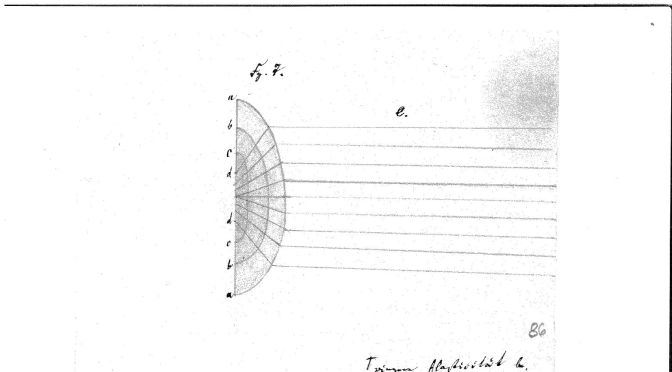




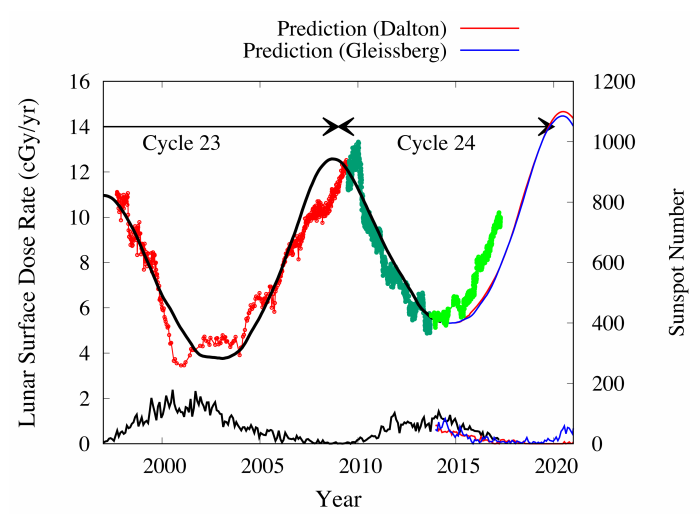


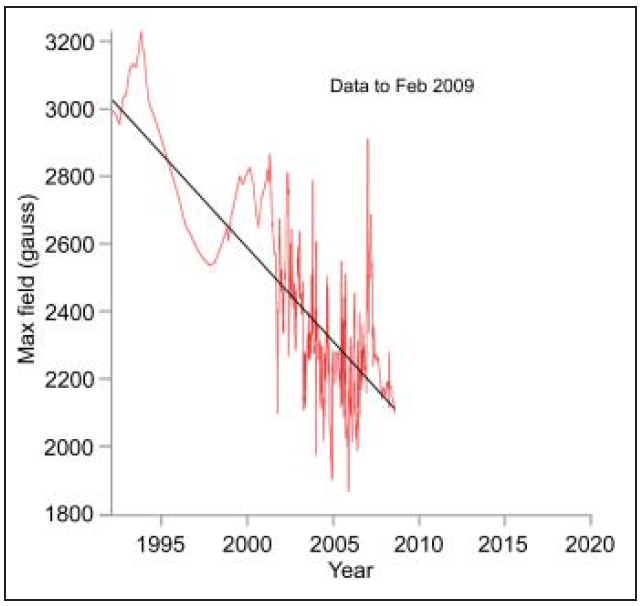
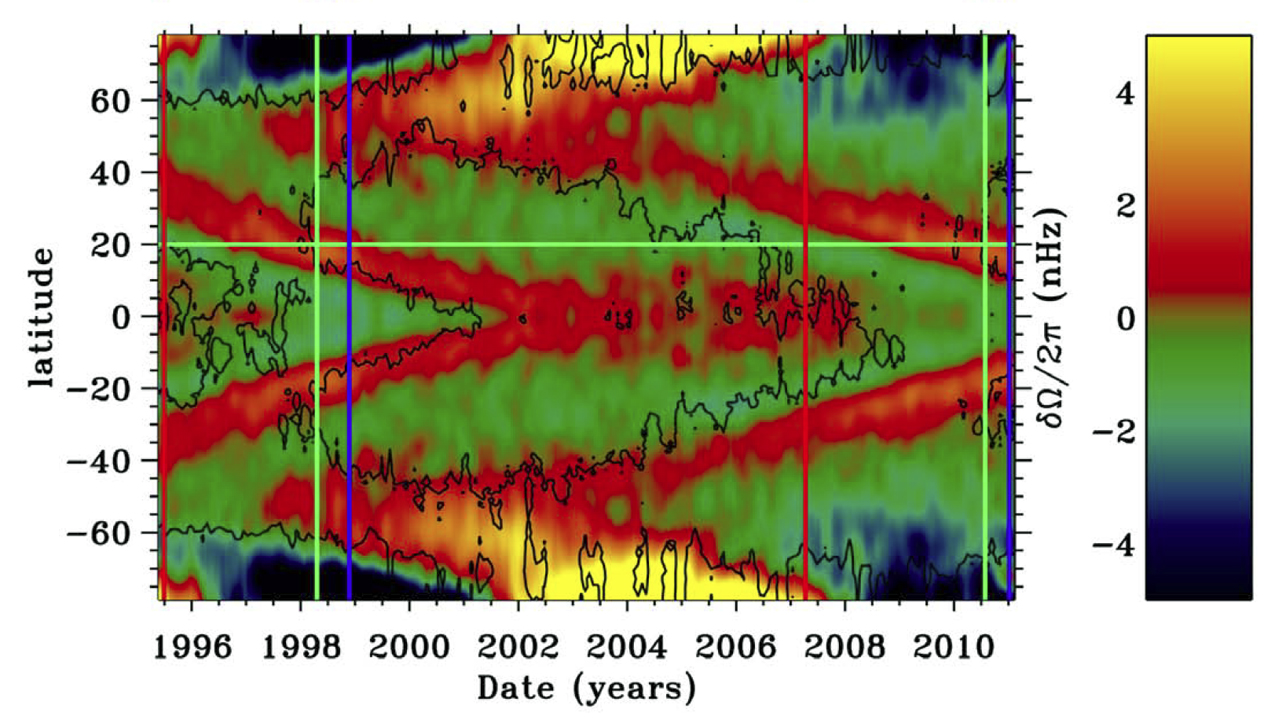



![Single domain magnet chain within a magnetotactic bacteria. [http://www.calpoly.edu/~rfrankel/mtbphoto.html]](https://stonetelescope.files.wordpress.com/2016/11/image1a.jpg)
